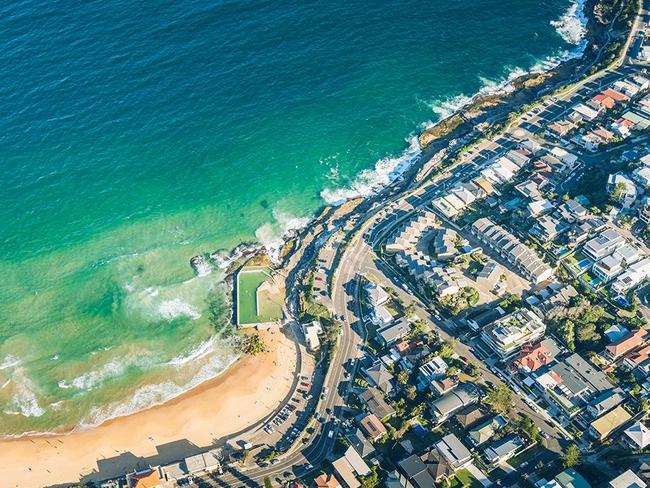Sydney residents fleeing COVID hotspots for safer areas
The COVID-19 pandemic is making residents in red zones pack up and leave to safer areas with some once favourite suburbs no longer as popular as they were. Search and see if it’s near you.

NSW
Don't miss out on the headlines from NSW. Followed categories will be added to My News.
Exclusive: The COVID-19 pandemic is prompting families to move interstate for work while others are fleeing coronavirus hotspots.
Job restrictions, family dynamics or lifestyle changes are behind some of the reasons people are moving according to new data from national start-up Muval, a comparative website that connects people with removalists.
Their data shows Australians are looking to leave COVID hotspots and are also interested in doing the ‘sea’ or ‘tree’ change with a rise in people seeking out regional changes and lower-price areas.
Regionally Dubbo in NSW along with the Northlakes and Maroochydore areas of the Sunshine Coast in Queensland have seen significant interest, while there has also been a dramatic spike in inquiries for coastal areas like Byron Bay and the Gold Coast.

When it came to capital cities people were trying to escape from, Sydney still took out the top spot with the amount of migrators seeking to leave more than double other cities (30 per cent).
Melbourne was next with 27 per cent, with most looking to go to Queensland, and Brisbane showed a net gain with only 16 per cent looking to leave, in comparison to 19 per cent inbound.
Richmond topped the list of the suburbs people were fleeing from in Victoria with a 91 per cent increase in the number of people looking to move out from the latest data covering April to July, in comparison to pre-COVID times, while Clayton was the suburb they wanted to move into (94 per cent increase).
In South Australia, Mawson Lakes had a 63 per cent increase in moving out requests and Mount Barker was the suburb everyone was trying to move into (529 per cent increase).
Over on the east coast in NSW, there has been a nearly 150 per cent increase of people trying to get out of COVID hotspot Liverpool – a tripling since the suburb was named a high-risk COVID-19 hotspot and separately there has been a 207 per cent increase of residents wanting to become Homebush inhabitants.
There was also general interest in moving out of traditionally popular suburbs including Randwick, Alexandria, Chatswood, Waterloo, Dee Why, Mosman and the inner city and into Western Sydney.
Data from April until June saw Parramatta become the highest searched suburb on the platform by 30 per cent, pushing Randwick – previously the highest searched suburb on the site – out of the top five most popular suburbs altogether.

Red Hill in Queensland has seen a whopping 1290 per cent increase and Marsden is the biggest mover with a 293 per cent increase of people wanting to move in.
Muval CEO James Morrell said the financial fallout from the pandemic is now a tipping point for people who are deciding where to move to.
“In the first quarter of 2020 we saw more proactive moves being made with new jobs and house purchases driving the activity,” Mr Morrell said.
“Post-COVID there is a higher number of calls coming in where moves are now being forced upon people due to job losses and business downsizing and seemingly other circumstances brought about by the virus. In many cases we hear of plans for lifestyle changes that were ‘in the works’ being sped up by COVID-19 especially with people making a more drastic change to move interstate rather than just moving down the road.
“Even when people are moving due to their lease being up we are finding COVID is influencing their decisions on where to move next,” said Mr Morrell.
Domestic violence is also playing an increasing role, Muval report, with The Australian Institute of Criminology recently releasing new data showing more than half of women who had previously experienced physical or sexual violence said the violence had become more frequent or severe since the start of the pandemic.
MORE NEWS:
Masks mandatory as Vic hits 723 cases, Qld and NSW numbers rise
New change to $200 tap and go limit
Supermarket bargains: 79c soup, $1 cookies, $3 oats

James Cook University sociologist Nick Osbaldiston is a lifestyle migration researcher and said the shift in working patterns with more people working from home may see some people looking to more distant areas but more broadly regions will be facing challenging times.
“In some regional areas their unemployment rates will get quite significant and that will lead to a bleed of people out,” he said.
“Sydney was already in net migration loss in terms of internal migration as one of the only capital cities that was losing international population – but previously that had been bolstered by overseas migration, which will no longer be happening.”
He said recessions do typically restrict people’s choices: “at the end of the day you need to go to where the employment is.”

That was the case for Farnaz Cassimjee who moved out of Southbank in Victoria to New South Wales a few months ago to take up a short-term contract job that was a demotion from her usual role as a data analyst.
“I left my job prior to everything going bad and then couldn’t find anything. I got a basic data entry job in Sydney on a short-term contract and thought it was better than nothing,” she said from her new home in St Leonards on Sydney’s north shore, closer to family and friends.
Fortunately, Ms Cassimjee’s new company quickly realised her potential and offered her a longer contract as a data analyst.
“I am really happy to be in Sydney, I was feeling a bit cooped up in Melbourne. It’s nice and leafy here and you can hear the birds singing in the morning,” she said.
